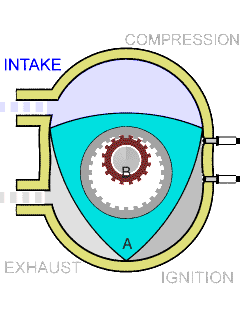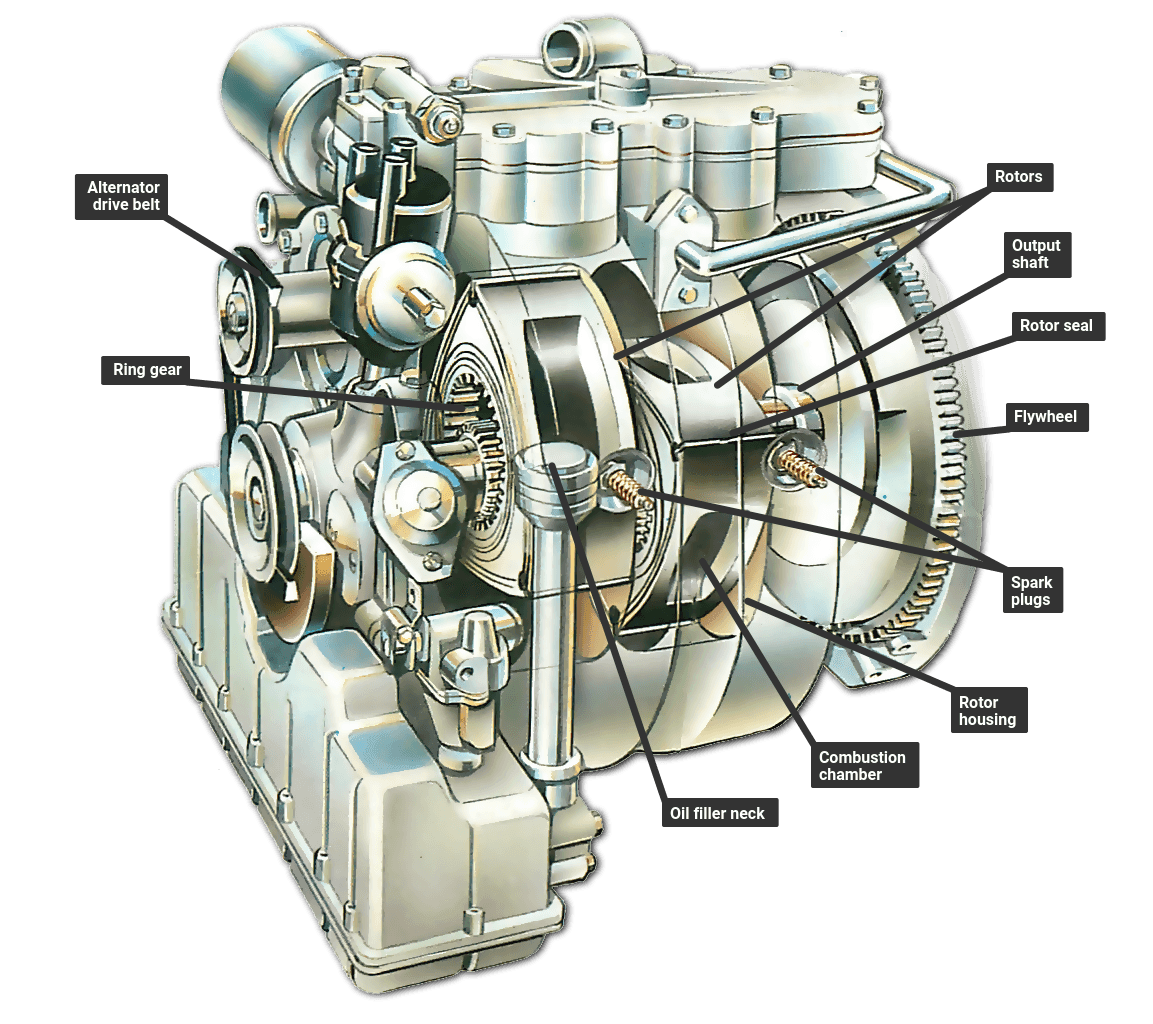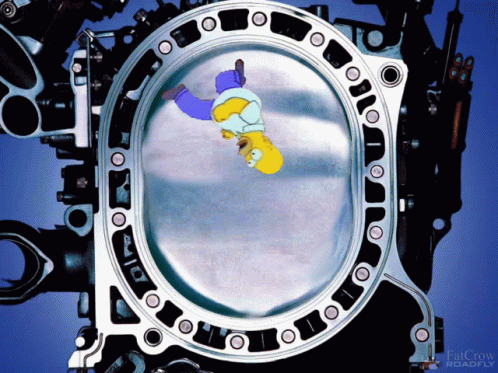We've all seen it, GIFs and illustrations of how the rotary engine works. It never made that much sense to me because I could not figure out how the hole in the center of the triangle (or dorito) would transfer torque to the splined shaft of the crank. Turns out, this is a big lie.

Look at an actual rotary crankshaft, called an eccentric shaft or eshaft.

Yep, it is not splined and the triangles don't have gears all the way through.

There are fixed gears at each end and they support the doritoes as they spin on their eccentric path.

These are the things that keep me occupied after 5 on a Friday.
It isn't a lie, they just don't show the offset on the e shaft. The stationary gear is doing its thing. The e shaft is spinning inside it faster than the rotor.

j_tso
Dork
4/21/23 6:35 p.m.
Looks like just adding a circle inside the rotor gear would've cleared everything up. Or this video from Mazda from the 1970s

Can you show me on a simple map?
This is the rotary diagram I've seen the most

pinchvalve (Forum Supporter) said:
We've all seen it, GIFs and illustrations of how the rotary engine works. It never made that much sense to me because I could not figure out how the hole in the center of the triangle (or dorito) would transfer torque to the splined shaft of the crank. Turns out, this is a big lie.

Look at an actual rotary crankshaft, called an eccentric shaft or eshaft.

Yep, it is not splined and the triangles don't have gears all the way through.

There are fixed gears at each end and they support the doritoes as they spin on their eccentric path.

These are the things that keep me occupied after 5 on a Friday.
The shaft rotates. There is a gear on the rotor, per the image.
The main bearings are in the components known as stationary gears, which are exactly what you would think they are.








































